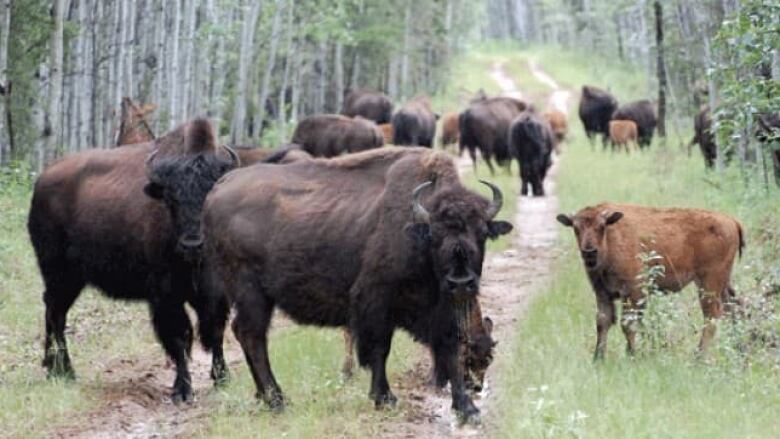Fort Smith wood bison study halted by aboriginal groups
Metis Council president cites lack of consultation, says researchers welcome back next year

Aboriginal groups in the Fort Smith area have stopped a wood bison study due to a lack of consultation between themselves and researchers.
The researchers, from the University of Saskatchewan, were in the area trying to develop a more accurate test for bovine tuberculosis a disease that runs rampant in the area.
The Fort Smith MetisCouncil says itapproved the study over the phone, with an understanding that researchers still needed to meet with local aboriginal groups in person. According to Ken Hudson, the Council's president, they wanted to be part of the research, which involved collaring, testing, and killing the test bison.
That meeting never took place, however, and researchers collared 29 bison before being asked to leave.
"They went ahead, got into town, never even called us," says Hudson. "Went out and started doing the program without even saying hello.
"You got to follow through on what you say you're going to do, and that is to meet with the aboriginal groups and plan this thing."
Hudson says the researchers will return in the coming weeks to remove collars from the 29 test bison. He says they're welcome back next year, as long as they include aboriginal groups in the planning process.












_(720p).jpg)


 OFFICIAL HD MUSIC VIDEO.jpg)
.jpg)



























































































